WORKING
QUADS




 "WORKING QUADS" what's
new
"WORKING QUADS" what's
new
"WORKING QUADS" links
The Presentation for the Rehabilitation International 18th World Congress
INTELLECTUAL WORKING OF THE QUADRIPLEGICS MAKING GOOD USE OF TECHNOLOGY
WHO NEED ATTENDANT SERVICES IN JAPAN
by Kazuo Seike,

"WORKING QUADS" homepage
2000 and Beyond, Rehabilitation International 18th World Congress
Congress Programme
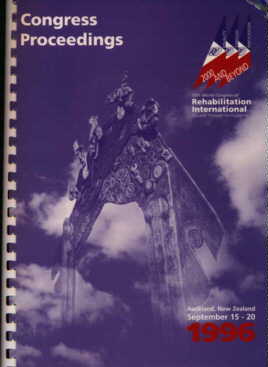
-394-
DATE : WEDNESDAY, 18 SEPTEMBER
SESSION NO & : 87 - WORLD AT WORK
TITLE :
INNOVATIONS IN REHABILITATION AND RETURN TO WORK:
WHAT WORKS AND WHAT
DOESN'T
CHAIR : JAMES BARNES
MANAGING DIRECTOR, NEW FRONTIERS
INTERNATIONAL, WELLINGTON, NEW ZEALAND.
PRESENTATION : HON DOUG KIDD,
MINISTER OF LABOUR, NEW ZEALAND
LEX FRIEDEN
SENIOR
VICE-PRESIDENT, THE INSTITUTE FOR REHABILITAYION AND RESEARCH.
RYOSUKE
MATSUI
DIRECTOR INTERNATIONAL COOPERATION, JAPAN ASSOCIATION FOR
EMPLOYMENT OF DISABLED PERSONS
KAZUO SEIKE
PRESIDENT, RESEARCH
ASSOCIATION ON WORK FOR EMPLOYMENT OF DISABLED PERSONS
HARTMUT HAINES
FEDERAL MINISTRY OF LABOR AND SOCIAL AFFAIRS
ROGER BARSON
DISABILITYT POLICY AND PLANNING, DEPT OF HUMAN SERVICES AND HEALTH
JEAN SHERRELL-ALEXANDER
AUSTRALIA
VAUGHAN SAMPSON
CHIEF EXECUTIVE, AUCKLAND EMPLOYERS' ASSAOCIATION
ROSS WILSON
VICE-PRESIDENT, NZ COUNCIL OF TRADE UNIONS
GRANT TWEDDLE
EXECUTIVE OFFICER, ACCIDENT REHABILITATION AND COMPENSATION INSURANCE
CORPORATION
INTRODUCTION : HON DOUG KIDD
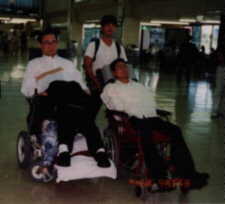
18th World Congress of
Rehabilitation International
Auckland, New Zealand 1996
Kazuo Seike,
Mr. Reiji Goto, Mr. Naoki Tamashiro
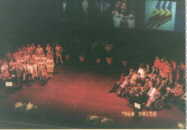
18th World Congress of
Rehabilitation International
Auckland, New Zealand 1996
Prime Ministar
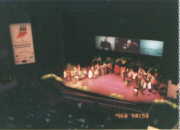
18th World Congress of
Rehabilitation International
Auckland, New Zealand 1996
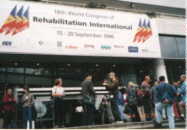
Auckland, New Zealand
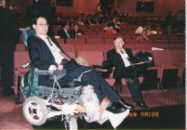
Seminar: T. Session No: 87.
Wednesday 18 September, 10.30 am - 5.30 pm. ASB Theatre, AC
World At Work
- Innovations in Rehabilitation and Return to Work: What Works and What
Doesn't

Seminar: T. Session No: 87.
Wednesday 18 September, 10.30 am - 5.30 pm. ASB Theatre, AC
World At Work
- Innovations in Rehabilitation and Return to Work: What Works and What
Doesn't
Six countries will come together to share experiences in
developing legislation and applying models to return injured workers to work.
This Seminar aims to provide attendees with information on training and pilot
programmes from around the world from which lessons can be learned together.
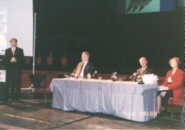
Seminar: T. Session No: 87.
Wednesday 18 September, 10.30 am - 5.30 pm. ASB Theatre, AC
World At Work
- Innovations in Rehabilitation and Return to Work: What Works and What
Doesn't
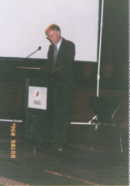
The World at Work
Seminar: T. Session No: 87. Wednesday 18 September, 10.30 am - 5.30 pm.
ASB Theatre, AC
World At Work - Innovations in Rehabilitation and Return
to Work: What Works and What Doesn't
Six countries will come together to
share experiences in developing legislation and applying models to return
injured workers to work. This Seminar aims to provide attendees with
information on training and pilot programmes from around the world from which
lessons can be learned together.
Introduction: Hon Doug Kidd,
Minister of Labour, New Zealand.
(Introduced by Gavin A Robins,
Managing Director, ACC).
Co-Chairs:
Celia Fullerton-Smith,
Regional Assistant Commissioner, State Services Commission, Auckland, New
Zealand.
James Barnes, Managing Director, New Frontiers International,
Wellington, New Zealand.
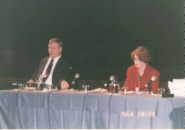
Lex Frieden, Senior
Vice-President,
The Institute for Rehabilitation and Research.
Presenters: USA
Overview of the Americans with Disabilities Act
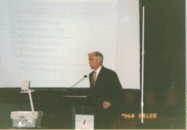
An Employer's Perspective
Speaker to be Announced.
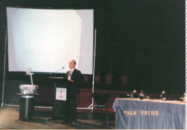
Ryosuke Matsui, Director
International Cooperation, Japan Association for Employment of Disabled
Persons
JAPAN An Overview - The Impact of the Quota System
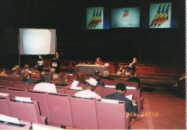
Kanzua Seike, President,
Research Association on Work of Persons with Severe Disabilities
Disability Management in the Workplace - Workplace Project
-395-
-396-
-397-
-398-
PRESENTER : KAZUO SEIKE
INTELLECTUAL WORKING OF THE QUADRIPLEGICS MAKING GOOD USE OF TECHNOLOGY
WHO NEED ATTENDANT SERVICES IN JAPAN
In Japan, quads
who need attendant services and cannot drive a car find it difficult
to
live with their family, not to mention independent living in communities. They
sometimes have to stay in hospital long after they get well or have to
enter nursing
homes. It is also hard for them to live in their own home.
They have to depend on
their family, public attendant service programmes
being far from sufficient. Few
opportunities for significant and gainful
jobs are available to them as compared
with people without disabilities.
Public offices employ the disabled on the condition
that they can commute
and work for themselves. Problems for quads in finding a
job have not yet
been resolved.
Such being the case in Japan, the Research Association
on Work of the Persons
with Severe Disabilities (RAW) has produced the
journal Working Quads and has
been focusing on the intellectual productive
activities of quadriplegics. However,
there have emerged, some, not many,
quadriplegics who need attendant services
to really work in Japan. We try
to find and contact those "working quads" and
make them known to the
society through our journal Working Quads.
The RAW was inaugurated in
1989, and consists of quads and specialists. The
RAW has researched the
possibility of working (the intellectual productive
activities) of the
persons with quadriplegia who need attendant service
programmes and cannot
drive a car. In this research, through fact-finding inquiries
on the
productive activities of the quadriplegics due to spinal cord injuries and
other impairments in Japan, America, and Canada, we compare the social
background and consider the possibility of using high tech for the
productive
activities of the quads, from the point of view of the
individual with severe disability.
The RAW has published the journal
Working Quads No.1 -No.10. No.9 is A4-size,
124 pages, color four pages,
1,000 copies. Its special issue is Self-employment
and the persons with
severe disabilities. No.10 is A4, 174 pages, 1,000 copies.
Its special
issues are The Intellectual Productive Activities of Quads Using the PC
System based on Windows Ver 3.1 and The International Network Activities
of Quads.
The Working Quads editorial office has 6 editors and 66
writers.
-399- Editors : Masafumi Ide, Spinal Injuries Center,
Department of Rehabilitation
Engineering Research and Development; Fukashi
Tsutsumi, Bureau of Sewage of
Fukuoka City; Lo Shihlin, Research Student
of Kyushu University ME; Kiyokatsu
Yoshida, Judicial Scrivener; Torahiko
Nakashima; Tatsumasa Hosokawa.
Its 66 writers consist of 59 people
with severe disability, one paraplegic and six
non-disabled. Of those 59
writers 52 have quadriplegia; four, cerebral palsy; one,
polio sequelae;
one muscular dystrophy; and one, infantile rheumatism. Among
the 59
severely disabled who contributed to Working Quads, 28 of them are self-
employed, eleven employed, two students and eighteen unemployed. Twelve
Quad writers receive no pension.
In this presentation, seven cases
(Mr TO, Ms IS, Mr TY, Mr KY, Mr HM, Mr FT, and
Ms NS) are introduced from
the writers.
Case Report
CASE ONE
Case 1 Mr. T.O., Small-scale
self-employment,
the data input and the word processor business in his
Home
Photograph
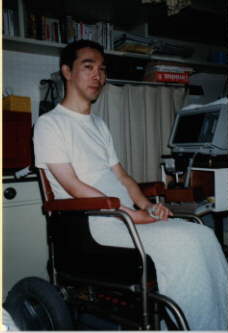
Mr TO. Born in 1962.
Male. Acquired his C5 quadriplegia due to an accident, in a
class of
physical education as a third year student in prefectural industrial high
school,in 1980. Entered Iwate Workers' Accident Compensation Hospital in
1981.
Entered a nursing home " Yoshihamaso " in 1982. Began to work on the
word
processor (NEC 7RA) for a printing office nearby in 1990. Began
independent
living after leaving the Nursing Home in May 1992. Got married
in May 1992.
Receives a basic pension disability and the special
physically handicapped person
allowance. Using mouth sticks, a telephone
with speakerphone, a powered hoist,
manual wheelchairs, a powered
wheelchair, and a station wagon (his wife drives).
Running his own small
business in his home. Data input and the word processor
business are done
by using his personal computer, PC9801FA (CPU 486) and the
FAX-Modem. He
lives in a private apartment in Morioka City, Iwate and the
attendant
person is his wife. He is healthy, and the length of his service is six
years.
CASE TWO
Case 2 Ms. I.S., Professional
self-employment,
Management of a private tutoring shcool in her home.
Photograph
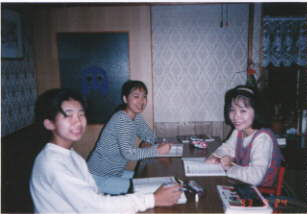
The photograph is a
class scenery in her own house. Ms. I.S. is a right edge.
Ms IS. Born
in 1956. Female. Entered the English literature faculty of
Seinangakuin
University in April, 1975. Acquired her C6 quadriplegia due to a
traffic
accident in August 1978. Entered Kyushu Workers' Accident Compensation
Hospital in September 1978. Moved to the Spinal Injuries Center, Japan in
-400-
September 1979. Went back home and returned to the
University in April 1980.
Began to tutor junior and senior high students
in English at home in June 1980.
Graduated from the University in March
1981. Receives no pension. Receives the
special physically handicapped
person allowance. Lives with her family in her own
house and attendant
persons are her mother and home helpers . Useing a
telephone with
speakerphone, a fax machine, manual wheelchairs, and a word
processor
(MS-DOS text file function). The English study progrmmes in her
own house.
It is an private lesson of one to two high school and junior high school
students of two hours at a time. She is healthy and the length of her
service is
fifteen years. She lives in Munakata County, Fukuoka
Prefecture.
CASE THREE
Case 3 Mr. T.Y., Professional
self-employment;
Free lance computer programmer and system engineer in his
home.
Photograph
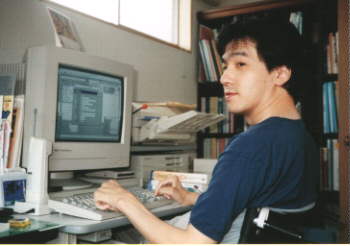
Mr. TY, special
running one's own business, and software development of free (programming)
Mr TY. Born in 1958. Male. Entered the department of engineering of
Meiji
University in April, 1978. Acquired his C7 left C6 right incomplete
quadriplegia due
to a traffic accident in October 1980 when working
part-time. Entered Tokyo
Koseinenkin Hospital. Moved to Yutaka Home of
Japan Sun Industries in Beppu
City in December 1981. Entered employment
joining a company of the Mitsubishi
Corp & Japan Sun Industries Inc.
in February 1984. Married on December 2 1985.
Got the qualification "Data
Processing 1st grade" in January 1989. Was
determined to returns to
hometown in time for his father's death in 1990. Began
to works as a free
lance computer programmer and system engineer in October
1991 Receives the
Workers' Accident Compensation pension and the special
physically
handicapped person allowance. Lives with his wife and two children in
his
own house using a manual wheelchair. Drives a remodelled car. Using a
computer NEC "Xt" system (CPU Pentium 166MH), memory 32MB, hard disk
drive 3.1GB, 17 inch display. ISDN telephone line, Terminal Adapter 64KB,
MS
Word (WIN), Visual C++ (WIN), MS-C Ver 6.0 (DOS), MASM Ver 5.1 (DOS),
N88BASIC (DOS), ACCESS (WIN), CA-dBFast (WIN). Develops software related
programs to the factory by using the C language, BASIC, and the assembler
with
Windows machine Xt. The design and the programming are done in the
language
corresponding to the demand of the purchaser. Is healthy, and the
length of his
service is twelve years. Works twelve hours a day on the
average. Lives in
Nobeoka City, Miyazaki Prefecture.
-401-
CASE FOUR
Case 4 Mr. K.Y.,
Professional Self-Employment, judicial scrivener in his office
Photograph
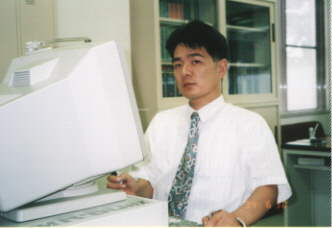
Mr. KY, special
running his own business, judicial scrivener
Mr KY. Born in 1962.
Male. Acquired his C6-7 quadriplegia due to a sport
accident of Judo and
entered the Kyushu Workers' Accident Compensation
Hospital in August,
1979. Discharged from hospital to home and returned to his
high school in
April 1980. Entered the law faculty of Kitakyushu University in April
1982. Lived with his parents in an apartment in the vicinity of the
university.
Graduated from the master course of law faculty of the
University in March 1988.
Got the license of a judicial scrivener in
December 1988. Business training began
in the Judicial Scrivener Office in
May in 1989; judicial scrivener registration in
June in 1990. Began to
manage his "Y office" in Nakatsu City in Oita Prrefecture in
July 1990.
Office establishment in July in the same year. Receives a national
basic
disability pension and the special physically handicapped person allowance.
Lives with his parents and the attendant person is his mother in his own
house. In
his office there are two clerks. Specialises in running his own
business as a
judicial scrivener. Using manual wheelchairs, a fax machine,
and a Hitachi
personal computer and judicial scrivener business software.
Drives a remodelled
car for commuting. Is healthy, and the length of his
service is three months of five
years. Lives in Chikujo County, Fukuoka
Prefecture.
CASE FIVE
Case 5 Mr. H.M., Large-scale
self-employment,
management of his building for rent in his home and his
office
President of the company to maintain his building for rent
Photograph
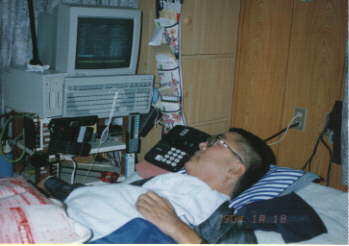
Mr. HM, large-scale
running one's own business, building maintain company president
Mr HM.
Born in 1938. Male. Entered Law Course of Tokyo University in 1958.
Acquired his C6 quadriplegia due to a car accident, in August, 1959.
Discharged
from hospital to his home in 1962. After leaving Tokyo
University, tutored at home
and manages parking lots. Established a
company in 1968. Left home in the
summer of 1970 at the age of 32 and
moved to the house at the coast which his
father had built. Planed to
build a building for rent on his father's land close to the
railway
station instead of doing the parking lot. Financing is applied to the Housing
Loan Corporation for the building construction capital and the capital of
about 70
per cent of the architectural expense 160,000,000 yen could be
borrowed.
Negotiated financing on the architectural capital to bank as for
the remainder of the
architectural expense. His father offered the
construction site as security for the
loan. The building of seven storeys
was completed in 1979. Lives by handling the
paid attendant persons in his
own house in Japan (spring, summer, autumn) and
the Philippines (winter).
Hires a clerk to maintain the building. Using mouth sticks,
a powered
hoist, a telephone with speakerphone, a fax machine, manual
wheelchairs, a
powered wheelchair with reclining system, one box car with ramp
(his
attendant drives), NEC personal computer, PC9801US2 (CPU 386) and
PC9821V7
(CPU, Pentium 75MH), 16MB memory, 500MB HDD, 15 inch display,
-402-
and a modem with Windows 95. Running Koyokosan Inc and 'Green Life
Institution in Japan'. Published two books, The Reviving Buddhism and
A Revived Life. After establishing the company at the age of 29, the
length of his
service is 28 years. Is healthy, but was several times
hospitalized due to
pneumonia etc. both in Japan and the Philippines.
Lives in Kitakyushu City,
Fukuoka Prefecture.
CASE SIX
Case 6 Mr. F.T.,
Employment,
reinstatement of the Bureau of Sewage of Fukuoka City
Chubu Sewage
Treatment Plant
Photograph
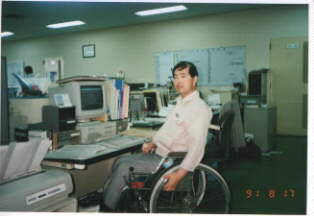
Mr. FT, employment, at
his office of the Bureau of Sewage of Fukuoka City,
Chubu Sewage Treatment
Plant
Mr FT. Born in 1943. Male. Graduated from the Department of
Engineering of
Kyushu University in 1967. Entered employment of the Bureau
of Sewage of
Fukuoka City in 1967. Acquired his C7 incomplete quadriplegia
due to a traffic
accident while commuting in service of Fukuoka city
office in 1985. Entered the
Spinal Injuries Center, Japan. Went back to
his own home in 1987. Returned to
the employment of the Bureau of Sewage
of Fukuoka City in 1988. Was assigned
to the Chubu Sewage Treatment Plant
in 1988. Receives employment income and
Workers' Accident Compensation
pension, etc. The mutual aid pension is
stopping. Lives with his family
and the attendant person is his wife in his own
house. Using manual
wheelchairs and powered hoist in his house. Employment
and reinstatement.
Works as an engineer using a computer with Ichitaro, Lotus
123 etc. for
making various documents and the data arrangements and explains
about the
Chubu Sewage Treatment Plant to visitors. Using a computer
NEC "DA" system
(CPU 386), hard disk drive 40MB, 14inch display. In his work,
the personal
computer operation is 70 percent. Commuting between the office
and his
home is by taxi and by the help of his wife. His wife commutes between
office and home to provide the assistance for meal and .toileting during
the day.
She commutes three times a day. He is healthy, and the length of
his service is
seven years since being reinstated in December 1988. It is
the same working
hours as colleague without disability in the office.
Lives in Fukuoka City, Fukuoka
Prefecture.
CASE SEVEN
Case 7 Ms. N.S.,
Employment, Return
to Employment of Amagasaki City Junior High-school
Photograph
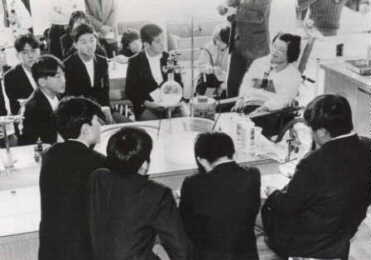
Mr. NS, employment,
Amagasaki city teacher reinstatement
Ms NS. Born in 1943. Female.
Acquired her C4 quadriplegia due to a ballooning
accident during her
overseas travel to Kenya in August 1989. Enteted hospital.
After returning
to Japan, entered the Kansai Workers' Accident Compensation
Hospital in
September in the same year. Complete weaning from ventilatory support
was
in 1990. Left the hospital and moved into a lease apartment house
-403-
in September 1992. Gave class of science open to the
public in elementary school
and in junior high school in December in the
same year as a lecturer. The
reinstatement wish is submitted to the city
educational committee on December
18 1992. The attached hospital medical
certificate was conditionally assumed to
be "reinstatement is possible".
Amagaaki City Educational Committee and Hyogo
Prefecture Educational
Committee notified her of the admission of the
reinstatement wish on
February 5 1993. Returned to employment as a Junior High
School science
teacher of Amagasaki City on February 8 1993. Training work at
Amagasaki
Municipal Education center. As for the content of her work, it is
science
education and welfare education. Receives employment income and Workers'
Accident Compensation pension, etc. The Mutual Aid pension is stopping.
Lives
with two volunteers in her lease apartment house. Is attended by
paid
attendants and volunteers. Using mouth sticks, the Environmental
Control
System, manual wheelchairs, and a powered chin control wheelchair
with reclining
system, a telephone with speakerphone, and a personal
computer PC9801RA
(CPU.386). Is healthy, and the length of her service is
three years. Lives in
Amagasaki City, Hyogo Prefecture.
DISCUSSION
Seven personal cses have been
introduced through this case report. In terms of
self-employment and
return to employment, quads have improved their quality of
working life by
thinking, communicating, and efficiently utilizing high-tech and
attendant
services within their abilities and assets. They create their own future
from the small scale self-employment (Mr TO, data entry), to the
professional self-
employment (Ms IS, management of private tutoring
school; Mr TY, system
engineer; Mr KY, judicial scrivener) to the large
scale self-employment (Mr HM,
management of his building for rent) There
is a lot of self-employment which is not
accompanied by the commuting
load. Mr FT and Ms. NS were introduced as
examples of return to the
employment work and their former position as
pubic servants. A quad cannot
acquire a driving license.
But compared with the U.S.A., very few
quads work as professionals or members of
the management in Japan.
The presenter studied abroad with assistance from the Project of
Training and
Study of Japanese Disabled Persons in the USA, and the
Japanese Society for
Rehabilitation of the Disabled Inc and the Circle of
Love Foundation from 1985 to
1986, and researched the Attendant Service
Programes and the Independent
Living Movement of people with disabilities
at the Centre for Independent Living in
Berkeley and the World Institute
on Disability.
-404-
In 1990, we received a Research Grant by
the Toyota Foundation for
comparative study of Japan and the USA on
participation in the process of the
productive activities of quadriplegics
with spinal cord injuries and the new
possibility by efficient utilization
of High Tech. In 1991, the presenter researched
and interviewed with C1-2
quad in San Francisco, USA, and attended the conference
"Independent
Living-Preparing for the 21st Century".
As for utilizing high tech,
Japan does not delay compared with the USA., but very
few people with
severe physical disabilities work as professionals. There are
many
specialists, members of management, and executive directors of Centres for
Independent Living in the United States. In America many quadriplegics due
to
spinal cord injuries participate in the process of the productive
activities, in the
background, as well as a various support system using
high tech. The social
consensus, as in the Americans with Disabilities
Act, not to accept discrimination
against people with disabilities is a
significant factor. It is a problem in the future.
CONCLUSION
Quadriplegics, typically represented by
quadriplegia due to spinal cord injury, have
no intellectual disability.
It is not constructive that quadriplegics with intellectual
abilities live
in nursing home, special nursing home for the aged and the hospital, etc. It
is
a problem from the point of the quality of life. It is a doubtful that
there is no option
in the above all.
Even
Quads can live
independently, which consists of working if there are attendant
services,
houses to live in, mobility and education. It is very useful for quads, their
families and society to share the information which can reduce the
quantity of
assistance for quads and increase their intellectual
productiveness.
For this purpose, the RAW would like to play a central
role to form an information
network and build a database which would help
to empower the quads who need
attendant services and cannot drive a car to
work.
In November 1994, the RAW was awarded a research grant by the
Marubeni
Foundation. We are working on a project to form the Network of
the Quad Writers
and to construct the database for the purpose of the
intellectual productive activities of
people with severe disabilities.
We think the quads who exchange information and personal contact
recover more
easily. It is very important to form a database of
information. The research
-405-
association on the work of
persons with severe disabilities and its journal Working
Quads will
continue to build information networks to present useful information.
We wish to express our gratitude deeply to the Japanese Society for
Rehabilitation
of the Disabled, the Circle of Love Foundation, the Toyota
Foundation and the
Marubeni Foundation, which cooperate in and support the
investigational research
and the project of the presenter and RAW.
C2 quadriplegia due to a sport accident,
Mr.
Kenji Yoshida
ventrilator user,
in-home living,
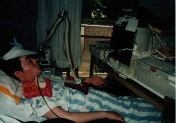
C1 quadriplegia due to
an ccident,
Mr.
Masahiro Ueda
ventrilator user,
cannot eat, drink,
in-home
living,
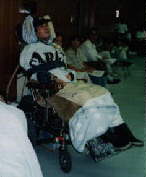
People in New Zealand
after
presentation
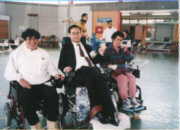
South Auckland Health
Otara Spinal Unit.
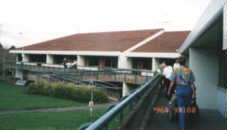
South Auckland Health
Otara Spinal Unit.
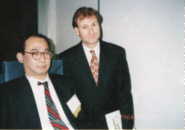
Gavin A Robins, Managing
Director, ACC.
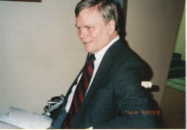
ACC's Dinner
Lex
Frieden
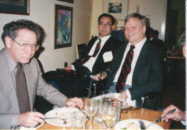
ACC's Dinner
Lex
Frieden
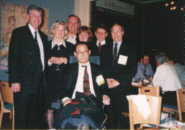
ACC's Dinner
Mrs. Jean
Sherrell-Alexander
Program Manager, Special Projectsa,
ACCIDENT
REHABILITATION & COMPENSATION INSURANCE CORPORATION
HEAD OFFICE,
SHAMROCK HOUSE, 81-83 MOLESWORTH STREET
P.O.BOX 242 WELLINGTON,
NEW
ZEALAND
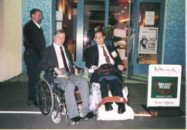
ACC's Dinner
Lex
Frieden
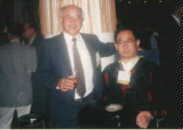
Banuqet in Aotea Centre
Mr. Sam Niwa, Japan
Developments in Creating an Asia/Pacific Network
of Workshops Employing Persons with Disabilities
Japan Planning for
Vocational Success.
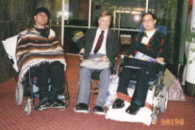
Banuqet in Aotea Centre
Wayne Wiri W. Terangi
Lex Frieden
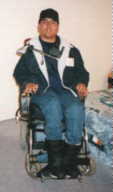
Wayne Wiri W. Terangi
New Zealand
chin conrol motor chair
Mouth and Foot Painting
Artists Association
"WORKING QUADS" homepage


